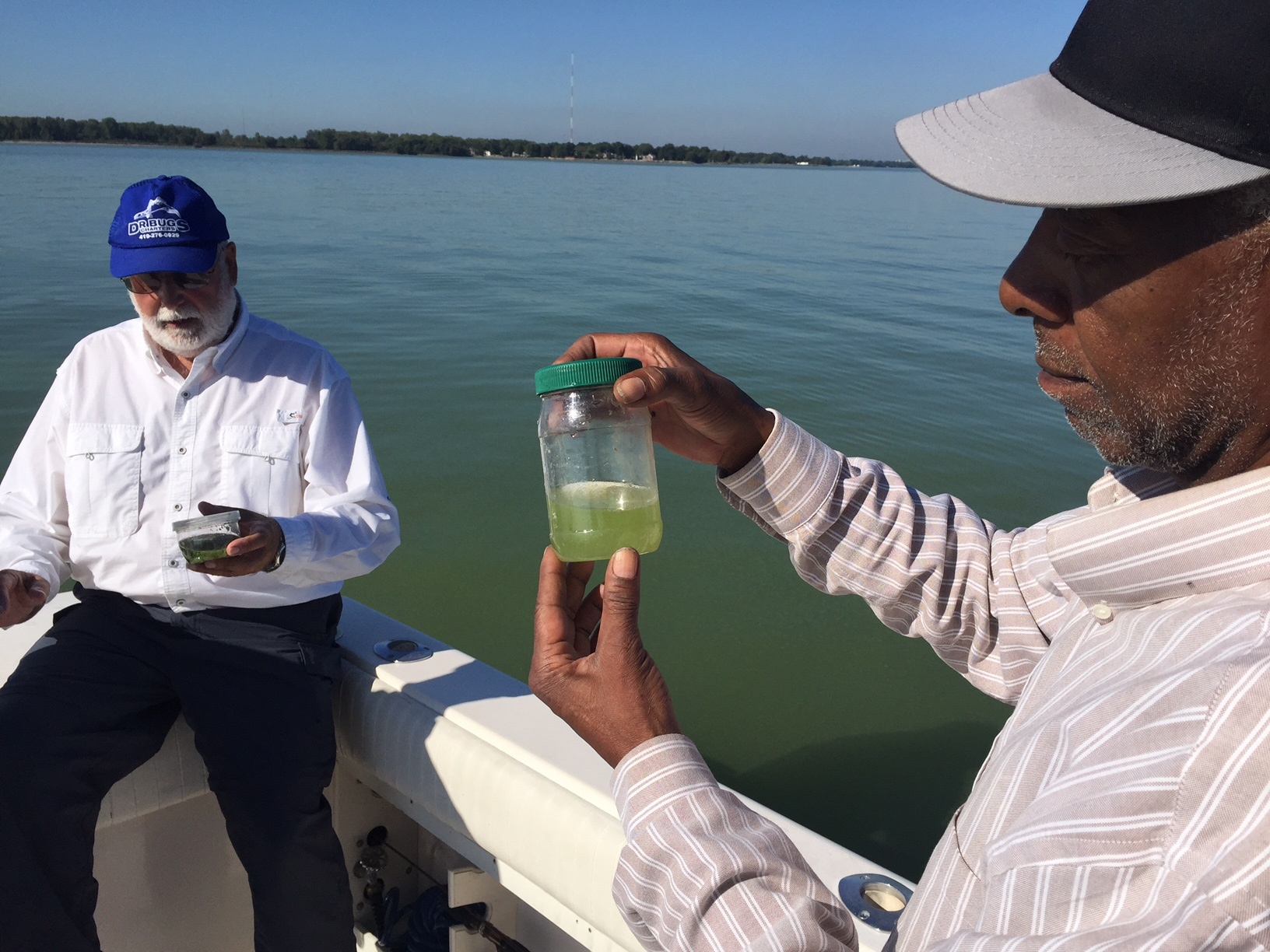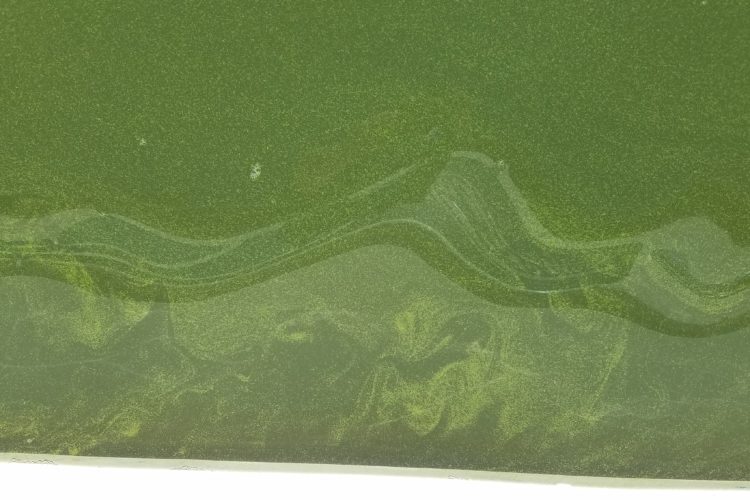We have much more to do and your continued support is needed now more than ever.
Agencies Falling Short in Efforts to Curb Lake Erie’s Toxic Algae

In recent weeks, the harmful algal bloom in the Western Basin of Lake Erie covered more than 700 square miles. Images of a green-fouled Maumee River, Maumee Bay and Lake Erie populate many news stories about the bloom prompting shock and outrage (again) at why this is happening and how do we fix it.
Despite hundreds of millions of dollars spent to solve the problem the past decade, the 2015 Collaborative Agreement between Ohio Governor John Kasich, Michigan Governor Rick Snyder and Ontario Premier Kathleen Wynne, and a target of a 40 percent phosphorus loading reduction into Lake Erie adopted by the states, province and federal governments under the Great Lakes Water Quality Agreement, actions to date and plans for the future fall short.
States, Federal Plans Inadequate
Unfortunately, the states and federal government are failing to offer solutions commensurate with the problem. Recently, state and federal agencies released draft Domestic Action Plans, plans required by the Great Lakes Water Quality Agreement to define the actions necessary to meet the target reduction. The Great Lakes Water Quality Agreement requires that the multiple plans be combined into one Domestic Action Plan for the U.S. and one for Canada by February 2018.
The draft plans released to date include many useful initiatives but all fall far short of providing any assurance that the proposed actions add up to meeting the 40 percent reduction target. The plans read like a grocery list without a recipe.
We need these plans to have definitive actions that will accelerate adoption of practices to keep nutrients on farm fields and include commitments for accountability should the reduction targets not be met. The plans need to address the realities of climate change and its impacts on agricultural nutrient and water management. To be sure, there are some good things in the plans, but there is no assurance the plans add up to what is ultimately needed to protect our drinking water, health, and economy from the ongoing scourge of harmful algal blooms.

We need these plans to identify how resources at the federal, state, local, both public and private, will be leveraged together to produce a synthesized, coordinated effort. In the United States, we need to fully utilize the programs and authorities in the Clean Water Act to meet the goal.
While the Great Lakes Water Quality Agreement calls for both accountability and adaptive management – a systematic, science-based process where progress is assessed and future actions are adjusted – we believe the federal plan needs to include a specific framework for that accountability and adaptive management. Such a framework should include commitments to specific benchmarks with metrics to assess progress and consequences for nonattainment of water quality goals.
It is time for the federal and state agencies to move beyond general statements about adaptive management and commit to milestones with timeframes and be accountable for meeting phosphorus loading targets for Lake Erie.
Science Highlights Manageable Solutions
The good news is that manageable solutions exist to curb harmful algal blooms. Last week, a group of researchers in Ohio with participation from the National Wildlife Federation, released a white paper on the current status of the science with suggested strategies to meet titled: Summary of Findings and Strategies to Move Toward a 40% Phosphorus Reduction.
This paper summarizes key findings about what we know today: that the Maumee and Sandusky Rivers are the largest tributary loaders of phosphorus and that 87 percent is coming from nonpoint sources, primarily agriculture. The remaining loads are a combination of wastewater treatment plants, combined sewer overflows and home sewage treatment systems.
The paper also summarizes what we know about nutrient loss from agricultural fields, effective management practices and insights about the practices farmers are likely to adopt based on several years of farmer survey data in the Maumee River basin. By synthesizing all of this information, the authors outline a number of suggested strategies to move towards that 40 percent phosphorus reduction.
Key Actions Needed
Utilizing the insights from the white paper, NWF has identified key actions that should be components of the U.S. Domestic Action Plan and acted upon by the state and federal agencies:
- Adopt nutrient water quality standards across U.S. states within the Western Lake Erie Basin that incorporate the binational phosphorus loading targets adopted under the Great Lakes Water Quality Agreement thereby bringing the targets under Clean Water Act authorities and programs;
- Establish programs to accelerate the adoption of subsurface placement of organic and inorganic fertilizer. Subsurface placement has emerged as a key management practice to prevent nutrient runoff from farm fields. Information should be gathered on the availability of equipment needed for subsurface placement so that programs can be designed to accelerate access and procurement for farmers;
- Mandate soil-test informed application rates so that fertilizer is only applied only in amounts needed for crop growth (also known as crop removal rates);
- Revise the USDA standards (NRCS 590 Practice Standard) for each state in the Western Lake Erie Basin to reduce soil test levels allowable for manure application and develop strategies and policies to aid farmers with manure application and distribution challenges;
- Include a framework for accountability as part of the commitment to adaptive management made by federal and state agencies with specific benchmarks, timelines and consequences for failing to achieve the target reductions.
Many farmers are embracing practices to help protect our rivers, lakes, and streams. But more needs to be done. To accelerate the adoption of solutions by farmers, elected officials can use incentive-based/voluntary and mandatory measures. At the end of the day, it is imperative that state and federal leaders act with urgency, because the status quo is not working, and delay will only lead to more damaging ecological and economic consequences and more costly to solve.
Gail Hesse serves as director, Great Lakes water program, for the National Wildlife Federation. She is the former executive director of the Ohio Lake Erie Commission.





















